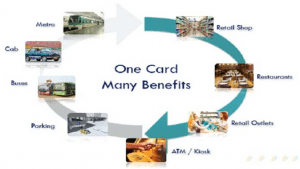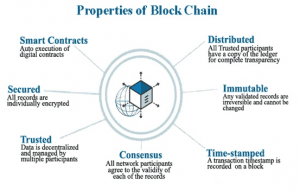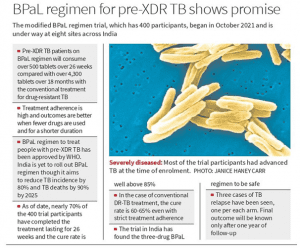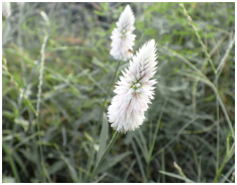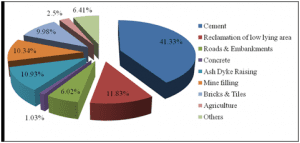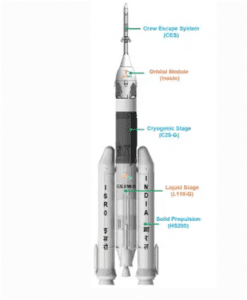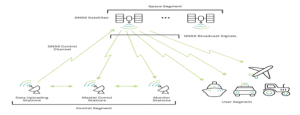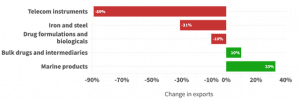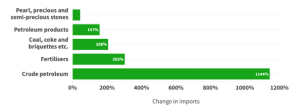TOP 5 TAKKAR NEWS OF THE DAY (14th AUGUST 2023)
1. CAG AUDITS NATIONAL SOCIAL ASSISTANCE PROGRAMME (NSAP)
TAG: GS 1: SOCIETY; GS 2: GOVERNANCE
THE CONTEXT: The CAG report found several irregularities in National Social Assistance Programme (NSAP).
EXPLANATION:
- The CAG report found several irregularities in beneficiary payments, the most glaring being that all states, except for Haryana and Kerala, did not maintain a database of eligible beneficiaries.
- This led to several eligible beneficiaries being left out of the scheme while payments worth several crores were made to ineligible persons.
- Around Rs 79 crore has been transferred to ineligible beneficiaries under the Ministry of Rural Development’s National Social Assistance Programme (NSAP) between 2017 and 2021. Of this, Rs two crore was paid to beneficiaries even after their deaths.
- At the same time, many eligible beneficiaries were likely to have been excluded from the welfare programme either due to non-maintenance of Below Poverty Line (BPL) lists or due to states not carrying out periodic surveys to identify eligible beneficiaries.
- Additionally, ineligible payments of Rs 15.11 crore under IGNDPS as disability pension was paid to 21,322 people in 16 states / UTs. In these cases, the percentage of disability was either below 80 per cent or could not be ascertained.
- Himachal Pradesh, Odisha, Bihar, Arunachal Pradesh, Tamil Nadu, Madhya Pradesh, Gujarat, Assam, Chhattisgarh, Telangana, Mizoram, Andhra Pradesh, Manipur, Uttarakhand, Punjab and Ladakh are among the States that made the highest numbers of ineligible payments.
- The beneficiaries were to be selected from the BPL list until the Socio-Economic Caste Census (SECC) was finalised. Though the governments are mandated to identify beneficiaries using SECC once it is finalised, they continued to use BPL lists that were not regularly updated.
- In the absence of proactive identification and non-maintenance of database of eligible beneficiaries as intended, the scheme was being implemented in a demand-driven mode where benefits were provided to only those beneficiaries who applied for pensions/benefits under NSAP themselves.
- The eligible beneficiaries who were unaware/lack resources to apply for the benefits were left out of ambit of NSAP,” the report revealed.
- Further, funds of Rs 57.45 crore earmarked for NSAP were diverted for other schemes and purposes in six states/UTs, while funds amounting to Rs 18.78 crore were lying idle for a period ranging from one to five years in eight states/UTs.
NATIONAL SOCIAL ASSISTANCE PROGRAMME (NSAP)
- NSAP was launched on 15th August, 1995 to provide social security to the destitute population living below the poverty line and vulnerable groups in 1995.
- The programme includes five sub-schemes, of which three Indira Gandhi National Old Age Pension Scheme (IGNOAPS), Indira Gandhi National Widow Pension Scheme (IGNWPS) and Indira Gandhi National Disability Pension Scheme (IGNDPS) are pension schemes.
- The other two sub-schemes are the National Family Benefit Scheme which provides one-time assistance to the bereaved family in the event of death of the breadwinner and the Annapurna scheme, which ensures food security to eligible old age persons who are not covered under IGNOAPS.
- The National Social Assistance Programme (NSAP) represents a significant step towards the fulfillment of the Directive Principles in Article 41 and 42 of the Constitution recognizing the concurrent responsibility of the Central and the State Governments in the matter.
Objective of NSAP
- It is a social security and welfare programme to provide support to aged persons, widows, disabled persons and bereaved families on death of primary bread winner, belonging to below poverty line households.
Components of NSAP
The NSAP at its inception in 1995 had three components namely
- National Old Age Pension Scheme (NOAPS,
- National Family Benefit Scheme (NFBS) and
- National Maternity Benefit Scheme (NMBS). The National Maternity Benefit Scheme (NMBS) was subsequently transferred on 1st April, 2001 from the Ministry of Rural development to the Ministry of Health and Family Welfare.
Presently NSAP comprises of five schemes, namely –
- Indira Gandhi National Old Age Pension Scheme (IGNOAPS),
- Indira Gandhi National Widow Pension Scheme (IGNWPS),
- Indira Gandhi National Disability Pension Scheme (IGNDPS),
- National Family Benefit Scheme NFBS) and
Eligibility and scale of assistance
- For getting benefits under NSAP the applicant must belong to a Below Poverty Line (BPL) family according to the criteria prescribed by the Govt. of India.
- The other eligibility criteria and the scale of central assistance under the sub – schemes of NSAP are as follows. Besides the central assistance, states / UT contribute an equal amount as their share.
2. PRADHAN MANTRI UCHCHATAR SHIKSHA ABHIYAN (PM-USHA)
TAG: GS 1: SOCIETY; GS 2: SOCIAL JUSTICE
THE CONTEXT: 14 States as Kerala, Tamil Nadu and West Bengal are yet to join Centre’s flagship education scheme which mandates the implementation of the National Education Policy. It is important in order to avail funds worth almost ₹13,000 crore for the next three years, under the Centre’s flagship scheme for State-run higher education.
EXPLANATION:
- A Memorandum of Understanding (MoU) with the Centre mandates National Education Policy implementation.
- However, some Opposition-ruled States are against MoU, given that PM-USHA scheme has 60:40 funding split between Centre and States, with no extra money for NEP reforms.
- The Centre says it holding discussions to iron out differences with dissenting States.
- The MoU is to show the willingness of States and UTs to participate in the PM-USHA scheme and it will help in the better implementation of the scheme.
NEP reforms need more funds:
- The MoU which makes it mandatory for States to undertake the administrative, academic, accreditation, and governance reforms detailed in the NEP, including an academic credit bank, entry and exit flexibility, and the Samarth e-governance platform has irked some State governments.
- Opposition states remarked that this MoU does not say anything about finding funds for changes envisaged under the NEP.
- Centre however, said that multiple consultations had been undertaken before finalising the structure of PM-USHA. The MoU contains clauses regarding proper planning, implementation and monitoring of the scheme.
- Commitment on planning and drafting the proposals by the State by aligning it with NEP will lead to integration between NEP and PM-USHA.
- The Centre points that PM-USHA reduces the fragmentation of resources by streamlining the number of scheme components to six.
- More flexibility has been given to States/UTs to undertake activities as per felt needs. Unit costs of some components have been rationalised for tangible outcomes.
- States and UTs have also been given the flexibility to identify their focus districts on the basis of various indicators, such as low gross enrolment ratio, gender parity, population proportion of Scheduled Castes and Tribes.
- These districts will be prioritised under the scheme to address the diverse needs of each State or UT.
Pradhan Mantri Uchchatar Shiksha Abhiyan (PM-USHA).
- In the light of the National Education Policy, RUSA scheme has been launched as Pradhan Mantri Uchchatar Shiksha Abhiyan (PM-USHA).
- PM-USHA is the new name for the Ministry’s scheme to improve the quality of higher education in State Universities through curricular and programme changes, teacher training, physical and digital infrastructure, accreditation, and enhancing employability while ensuring equity, access, and inclusion.
- It provides an outlay of ₹12,926.10 crore between 2023-24 and 2025-26.
- The first phase of the scheme was launched in 2013 and the second phase was launched in 2018.
- PM USHA covers government and government-aided institutions of the States and UTs. As the demand for higher education is increasing continuously over the years, there has been an unprecedented expansion in the number of institutions, universities, and volume of students in the country.
Focus Areas:
- a) Equity Access and inclusion in higher education
- b) Developing Quality Teaching & Learning processes
- c) Accreditation of Non Accredited Institutions and improving accreditation
- d) ICT – based Digital Infrastructure
- e) Enhancing Employability through Multidisciplinary.
Institutional Structure of PM USHA:
1)Central Level
- National Mission Authority : Chaired by Minister of Education.
- PAB : Chaired by Secretary Higher Education , GoI
- National Project Directorate
- Technical Support Group
2)State Level
- State Higher Education Council (SHEC)
- State Project Directorate
- State Technical Support Group
3)Institution Level
- Board of Governors
- Project Monitoring Unit
Scope of PM- USHA : 1) Focus Districts and 2) Challenge method selection of institutions
1) Focus Districts :
Maximum 50% District of the State will be considered as focus District
• Lack of access to government colleges
• Low GER,
• Population proportion for females, transgender, SC, ST,OBCs
• Aspirational /Boarder Area, left wing extremism prone area
• Gender parity
2) Challenge method selection of institutions:
- Institutions will be short listed by the state by giving priority to the focus areas.
- On the basis of pre defined criteria weightages will be given to different institutions for
proposal submission. - The proposal bill be submitted and it will be evaluated by MoE and approval will be done by PAB at central level.
3. ADITYA L1: INDIA’S FIRST MISSION TO STUDY THE SUN
TAG: GS 3: SCIENCE AND TECHNOLOGY
THE CONTEXT: The Aditya L1 spacecraft, assembled and integrated at the U.R. Rao Satellite Centre (URSC), Bengaluru, has arrived at the Satish Dhawan Space Centre in Sriharikota.
EXPLANATION:
- Aditya L1’s payloads are expected to provide crucial information for understanding the problem of coronal heating, coronal mass ejection, pre-flare and flare activities and their characteristics etc.
- The Aditya L1 mission will be launched by Polar Satellite Launch Vehicle (PSLV), which also launched Chandrayaan-1 in 2008 and the Mars Orbiter spacecraft in 2013.
- The launch is likely to take place in August-end or September.
Aditya L1
- Aditya L1 shall be the first space based Indian mission to study the Sun. The spacecraft shall be placed in a halo orbit around the Lagrange point 1 (L1) of the Sun-Earth system, which is about 1.5 million km from the Earth.
- A satellite placed in the halo orbit around the L1 point has the major advantage of continuously viewing the Sun without any occultation/eclipses.
- This will provide a greater advantage of observing the solar activities and its effect on space weather in real time.
- The spacecraft carries seven payloads to observe the photosphere, chromosphere and the outermost layers of the Sun (the corona) using electromagnetic and particle and magnetic field detectors.
- Using the special vantage point L1, four payloads directly view the Sun and the remaining three payloads carry out in-situ studies of particles and fields at the Lagrange point L1.
- It will provide important scientific studies of the propagatory effect of solar dynamics in the interplanetary medium.
- The suits of Aditya L1 payloads are expected to provide most crucial informations to understand the problem of coronal heating, coronal mass ejection, pre-flare and flare activities and their characteristics, dynamics of space weather, propagation of particle and fields etc.
The major science objectives of Aditya-L1 mission are:
- Study of Solar upper atmospheric (chromosphere and corona) dynamics.
- Study of chromospheric and coronal heating, physics of the partially ionized plasma, initiation of the coronal mass ejections, and flares
- Observe the in-situ particle and plasma environment providing data for the study of particle dynamics from the Sun.
- Physics of solar corona and its heating mechanism.
- Diagnostics of the coronal and coronal loops plasma: Temperature, velocity and density.
- Development, dynamics and origin of CMEs.
- Identify the sequence of processes that occur at multiple layers (chromosphere, base and extended corona) which eventually leads to solar eruptive events.
- Magnetic field topology and magnetic field measurements in the solar corona .
- Drivers for space weather (origin, composition and dynamics of solar wind .
Aditya-L1 Payloads:

- The instruments of Aditya-L1 are tuned to observe the solar atmosphere mainly the chromosphere and corona.
- In-situ instruments will observe the local environment at L1. There are total seven payloads on-board with four of them carrying out remote sensing of the Sun and three of them carrying in-situ observation.
4. ENGINEERING OF ACINETOBACTER BAYLYI BACTERIA TO DETECT CANCER
TAG: GS 3: SCIENCE AND TECHNOLOGY
THE CONTEXT: Researchers at the University of California have engineered a specific species of bacteria that can detect cancer in its early stages by incorporating tumour DNA into its system.
EXPLANATION:
- According to a study that was published in the journal Science, an engineered bacteria may one day be able to detect cancer wherever it may be hiding in the human body’s intestines.
- The goal of the research is to turn these bacteria into a probiotic sensor in the gut that can carefully examine, identify, and report any intestinal disorders.
- This discovery is significant since colon cancer rates are growing and early identification in persons under 50 is critical.
- Acinetobacter baylyi, a kind of bacterium, has been effectively manipulated by a team at the University of California.
ACINETOBACTER BAYLYI BACTERIA
- These bacteria are normally non-pathogenic.
- They are naturally competent to take up DNA by horizontal gene transfer.
- These bacteria become resistant to a specific drug only when they took up DNA containing a cancer-associated mutation in a specific oncogene.
- These species are gram-negative aerobic bacteria that are coccobacillary in shape. (Cocci are sphere-shaped bacteria, while bacilli are rod-shaped bacteria. Bacteria that fall between these two shapes are called coccobacilli).
HOW DOES THIS BACTERIA DETECT CANCER?
- Acinetobacter baylyi bacteria is known for its ability to absorb DNA from their surroundings.
- It has been programmed to seek specific DNA sequences common in colorectal cancers.
- When it incorporates tumour DNA into its system, an antibiotic-resistance gene gets activated.
- This gene enables the growth of the bacteria on feces-derived antibiotic-containing agar plates.
- It demonstrates the presence of cancer cells.
WAY FORWARD TO ITS USE
- It might take some time before the approach is approved for use in clinical trials because the research is still in its early stages.
- The effectiveness and safety of the engineered bacteria still need to be meticulously tested.
- The bacteria are being engineered to recognise KRAS mutations (The KRAS gene belongs to a class of genes known as oncogenes), which are present in roughly 40% of colorectal malignancies, some lung cancers, and the majority of pancreatic tumours.
- For it to be genuinely effective in humans, researchers need to show that Acinetobacter baylyi is safe for oral ingestion and that it consistently yields accurate results when identifying cancer cells in faecal samples.
- The level of effectiveness of this bacterial biosensor in comparison to colonoscopy, a more invasive diagnostic procedure, needs to be examined as well.
- This discovery is significant since colon cancer rates are growing and early identification in persons under 50 is critical.
SOURCE: https://indianexpress.com/article/technology/science/engineered-bacteria-cancer-dna-8888930/
5. INTEGRATION OF NATIONAL PENSION SYSTEM (NPS) STATEMENT OF TRANSACTION WITH CONSOLIDATED ACCOUNT STATEMENT (CAS)
TAG: GS 2: POLITY; GS 3: ECONOMY
THE CONTEXT: The PFRDA has integrated the NPS Statement of Transaction with CAS is in line with the Centre’s goal to establish a comprehensive record of each person’s financial assets.
EXPLANATION:
- The National Pension System (NPS) subscribers now have access to a consolidated view of their personal assets in the securities market because of the updated mark-to-market values provided by the Pension Fund Regulatory and Development Authority (PFRDA) and SEBI.
- It includes the investors’ Demat account holdings as well as their mutual fund holdings.
- This will benefit over 1.35 crore NPS subscribers.
- It is expected to provide a simplified and secured way to stay informed on NPS investments through CAS.
PENSION FUND REGULATORY AND DEVELOPMENT AUTHORITY (PFRDA)
- It is a statutory regulatory body set up under PFRDA Act enacted in 2014.
- It is under the jurisdiction of Ministry of Finance for overall supervision and regulation of pension in India.
- Its objective is to promote old age income security and protect the interests of NPS subscribers.
- It is ensuring the orderly growth and development of pension market.
- COMPOSITION OF THE AUTHORITY:
- The Authority shall consist of a Chairperson and not more than six members, of whom at least three shall be Whole-Time Members, to be appointed by the Central Government.
NATIONAL PENSION SYSTEM (NPS)
- The Central Government has introduced the National Pension System (NPS) with effect from 2004 (except for armed forces).
- PFRDA the regulatory body for NPS, has appointed Protean eGov Technologies Limited as Central Recordkeeping Agency (CRA) for National Pension System.
- CRA is the first of its kind venture in India which will carry out the functions of Record Keeping, Administration and Customer Service for all subscribers under NPS.
- National Pension System (NPS) is an important milestone in the development of a sustainable and efficient voluntary defined contribution pension system in India.
- It has the following broad objectives:
- Provide old age income.
- Reasonable market-based returns over the long term.
- Extending old age security coverage to all citizens.
- NPS is structured into two tiers:
- Tier-I account:
- This is the non-withdrawable permanent retirement account into which the accumulations are deposited and invested as per the option of the subscriber.
- Tier-II account:
- This is a voluntary withdrawable account which is allowed only when there is an active Tier I account in the name of the subscriber.
- The withdrawals are permitted from this account as per the needs of the subscriber as and when claimed.
CONSOLIDATED ACCOUNT STATEMENT (CAS)
- It is a single/combined account statement which shows the details of financial transactions made by an investor during a month across all Mutual Funds and also other securities held in Demat mode.
- CAS is issued for those accounts wherein a financial transaction has been made during a month and wherein unit holders are identical, identified by Income Tax Permanent Account (PAN).
- CAS is generated on a monthly basis in respect of the PANs common to the RTAs and the Depositories.

